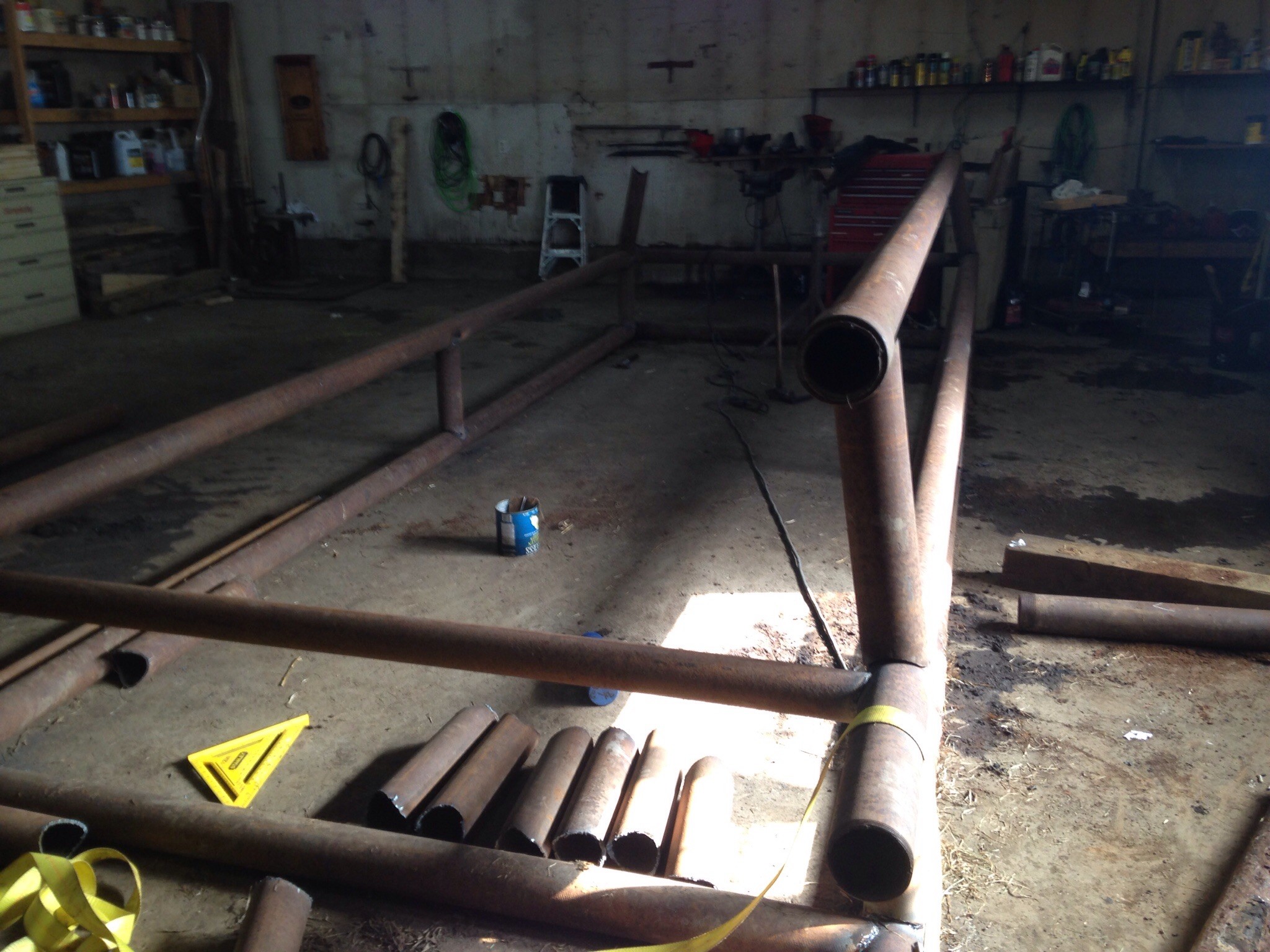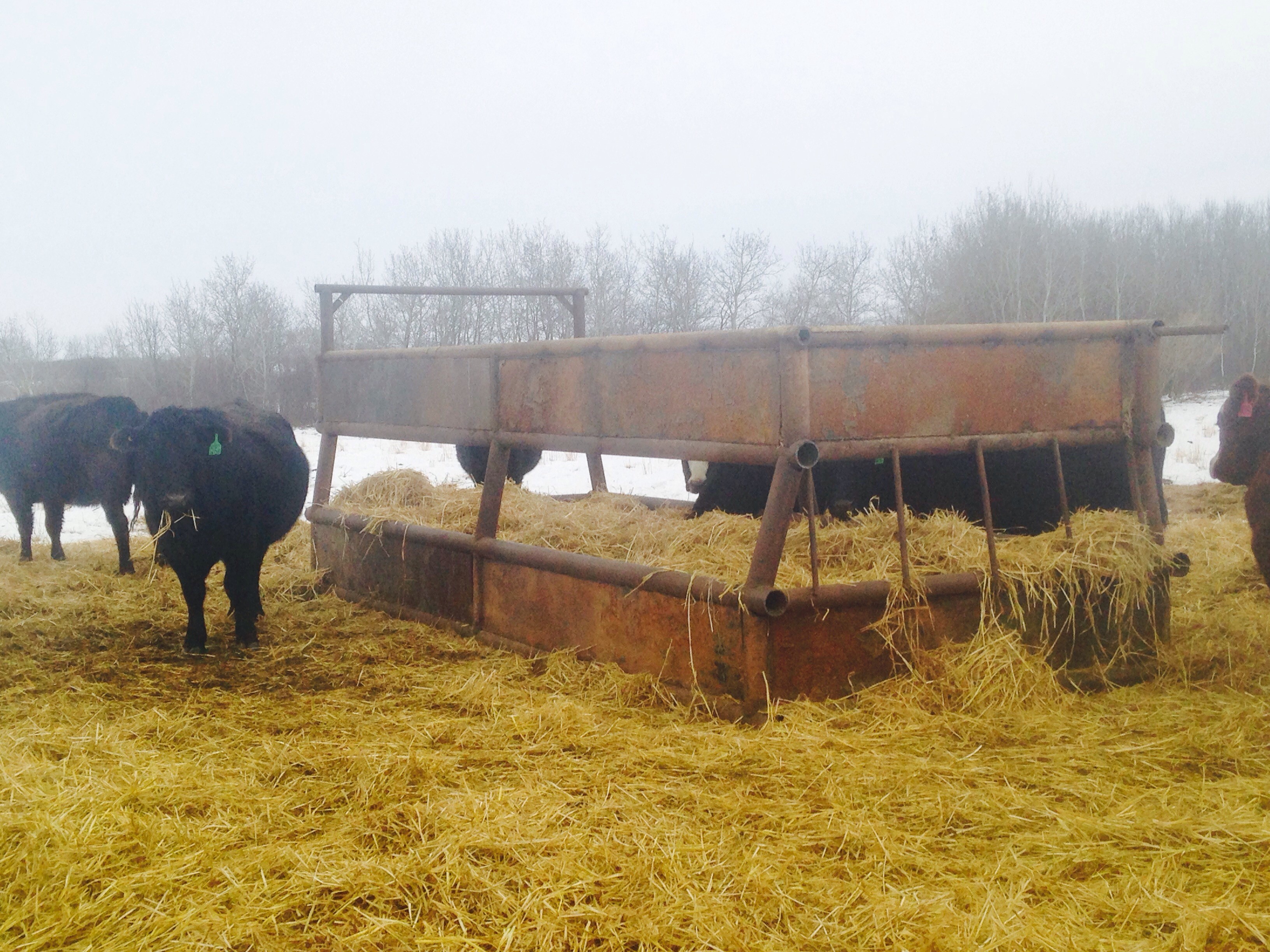Been on a kick to build a feeder which a guy can shred bales into. First one seems to be working. I'll post a picture later if anyone is interested. Working on another with a sloped in top rail so it's easier for cows to access the feeder. Why I'm doing this is to address the problem of waste when feeding grew feed. Anecdotally what I've seen so far is a substantial reduction in waste. With hay I'd rather roll it out or put in a feeder. Shredding wrecks good hay.
Announcement
Collapse
No announcement yet.
Bale feeders for shredding green feed into
Collapse
Logging in...
Welcome to Agriville! You need to login to post messages in the Agriville chat forums. Please login below.
X
-
Tags: None
-
I could see that happening. So far I shred a bit on the ground so they stay back. Here is a picture of the one I'm working on.

Comment
-
Have you figured the cost of "the waste" feeding greenfeed in rings or whatever? Does it exceed the cost of running a bale processor to put the same bale back into a different feed container in loose form bearing in mind if you're feeding on pasture the "waste" is being returned directly to the land or if you're feeding in corrals it's supplying bedding. Cows aren't stupid, they're not usually wasting the good stuff.
Comment
-
Good point Grass. Cows are being fed in the field barley greenfeed. I have one group I'm using a bale ring for greenfeed. Waste isn't near what it is shredding on bladed off ground that is for sure. Cows tramp a good bit on the ground. Earlier this winter we had our heifer calves in the corral and dad thought it would be interesting to see if they would better utilize the feed if it was shredded and put into the bale feeder. I thought it was a silly idea but they cleaned it up so much better than putting a bale in the feeder. Years ago I seen an article in cattleman about bale shredder waste and reducing it by using a feeder ring much similar to a bottomless silage feeder except 7 feet wide. I built one but found you couldn't get much in nor keep the cows from getting in. So this winter I added a bunk rail to it and a solid end. I know a bale ring would probably be adequate but shredding into a 30 foot long feeder gives more access for the cows. That was a big reason we went to a shredder in the first place was to spread it out enough so the wimps wouldn't get pushed away. This feeder will easily handle 30 plus cows at a crack. As well in a big snow year if you put it in a feeder like this you're not having to plow a bunch of snow to put out windrows. My thought is every time you feed you push the feeder 40 feet and spread the manure. Though Grass your points are valid and until I can substantiate concrete numbers this is just my anecdotal findings. One interesting thing is I feed every 2 days and on my non feeding day the cows are hardly feeding on the windrows but are still happily eating at the feeder. Your reply will be greatly appreciated as I respect your opinions.Originally posted by grassfarmer View PostHave you figured the cost of "the waste" feeding greenfeed in rings or whatever? Does it exceed the cost of running a bale processor to put the same bale back into a different feed container in loose form bearing in mind if you're feeding on pasture the "waste" is being returned directly to the land or if you're feeding in corrals it's supplying bedding. Cows aren't stupid, they're not usually wasting the good stuff.
Comment
-
In my older age, I have left the shredder parked, and do as little as possible...;-)
(Wished I had done this earlier...)
Feeding large triticale bales, 10 per week, but 5 at a time, 2 days a week. This is for 63 cows. Twine is already off, I grapple and move into a section, and when the bales are out of the next section, the cows go in and clean up what I dropped. I can make them clean up by not feeding them a little less, but with the colder weather, I like a bit of bedding. The "wastage" will be disked in...I do move the
spots I feed, so never feed at one spot.
Had used feeders a couple of years ago, but had too much buildup right around the feeder which was harder to deal with in spring...although I could have moved feeders more regularly and problem would have been solved.
For me, this has been the simplest, cheapest way I have found....although mid April calving instead of Jan/Feb has made this possible.
Did like a feeder a fellow from Alder Flats makes...it has door at end, but bottom of feeder panel swings in as feed is used up. Good luck with your project.....
http://www.kijiji.ca/v-livestock/red-deer/swing-feeders-for-cows-bulls-or-swing-feeder-for-calves/1214648653?enableSearchNavigationFlag=true
http://www.kijiji.ca/v-livestock/medicine-hat/self-adjusting-round-bale-tub-ground-bale-balefeeder/1152845754?enableSearchNavigationFlag=true
Comment
-
The swing feeder looks interesting. I would like to see one in action. I was interested in building a cone feeder because they were reported to waste the least. However further reading on studies said when it came to sloppy greenfeed waste wasn't much less than a ring. Besides the least waste was tight tied good quality hay with strings on placed in a ring feeder.
Comment
-
Shredder
Everybody worries about starting a tractor if you got livestock you will need a tractor if you have a shredder and blow into feeder cattle will clean it up better. If your feeder big enough you can take a poor bale shred in then put greenfield on top old cows clean it up put poor bale in feeder they waste even if put in field they waste not everybody gets perfect feed so mix good with bad and works
Comment
-
I finished the feeder and took it out to the cows. Here's a picture of it after feeding out of it for a week.
Beauty of this is you can feed a bunch of bales in it or blow in 1 1/2 bales of greenfeed. I would really like to know the exact amount of waste compared to feeding on the ground but it looks substantially less.
Comment
-
Comment
- Reply to this Thread
- Return to Topic List
Comment